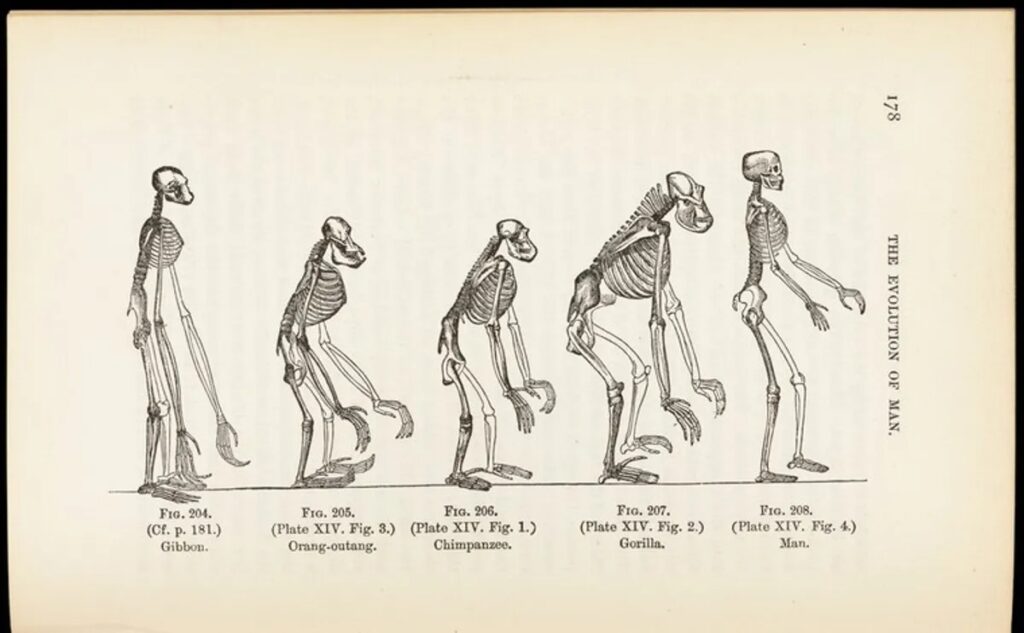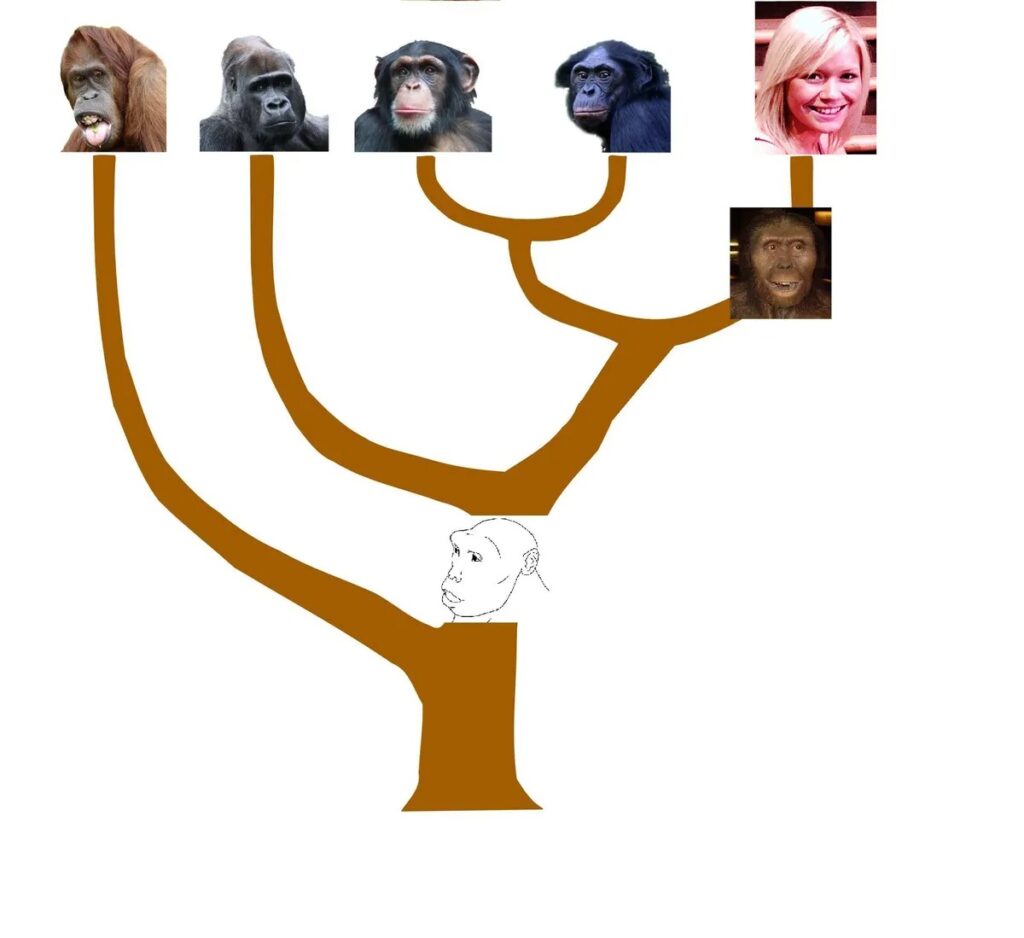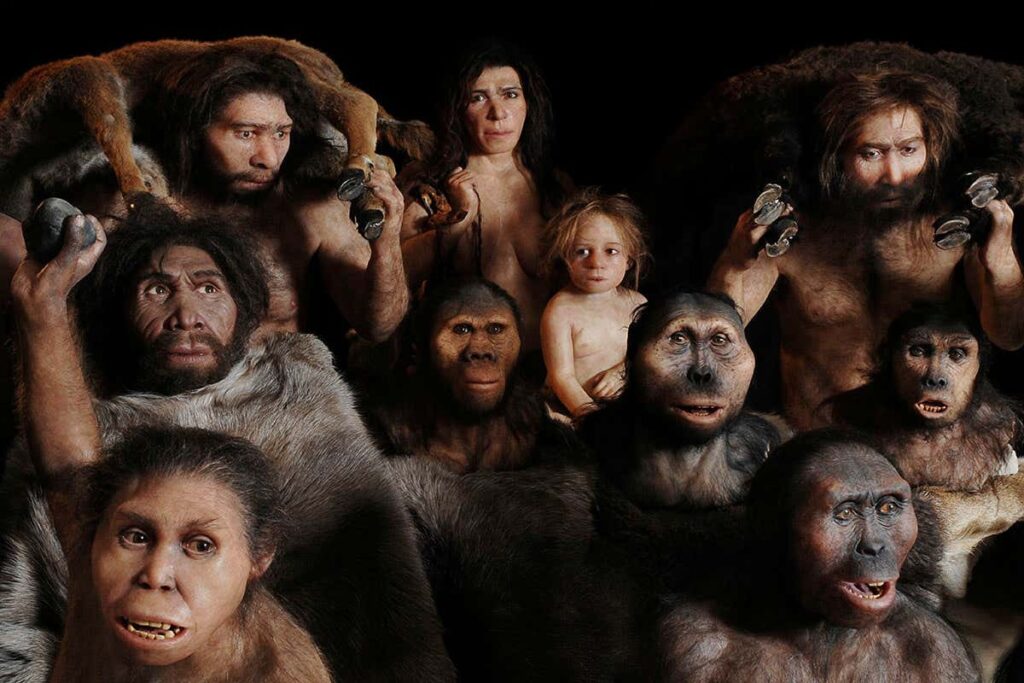
The key is understanding evolution is not linear.
Evolutionary biology has long been faced with a persistent question: “If humans evolved from monkeys, why are there still monkeys?” This query, however, is based on a series of misconceptions about the workings of evolution. To truly understand the process, we must break free from the notion that evolution is a linear path, leading from one species to another in a straightforward manner.
The iconic image often presented of a hunched-over chimp transitioning into an upright ape and finally a spear-wielding human is, in fact, misleading. Human evolution is not a direct line from monkeys to humans; rather, it is more like a branching tree, with various species developing from common ancestors.

Image credit: Ernst Haeckel/Wellcome Collection/Public Domain.
When we look at the Tree of Life, humans find themselves on a distinct branch, which diverged from the lineage of chimpanzees millions of years ago. It’s essential to grasp that humans and chimps share a common ancestor that once existed approximately 6 to 7 million years in the past. This ancestor evolved over time in response to different environmental pressures, eventually giving rise to both Homo sapiens and chimpanzees.
The fossil record, although patchy for all life on Earth, does not provide conclusive physical evidence of the exact last common ancestor. Nevertheless, the undeniable genetic similarity between humans and chimps, with approximately 98.8 percent shared DNA, confirms the existence of this ancient forebear.
To put it in perspective, the human and chimp branches on the evolutionary tree are akin to sub-branches, both stemming from a larger branch, which also gave rise to other great apes like bonobos, gorillas, and orangutans. If we follow this lineage even further back, we discover another common ancestor that links the great apes to the broader ape family.

Image credit: Armin Kübelbeck, via Wikimedia Commons, (CC BY-SA 3.0)
Zooming out even more on the family tree, we encounter a separate branch that signifies the common ancestor shared by great apes and monkeys. This split occurred approximately 25 to 30 million years ago, leading to the evolution of a diverse array of species over millions of years.
To gain a clearer perspective, consider this analogy: humans did not descend directly from apes, just as you did not descend directly from your siblings, who, in turn, did not descend directly from your cousins. Evolution is not a simple linear progression; instead, it is a complex and intricate network of branches that intertwine and diverge.
William Eric Meikle and Eugenie C. Scott articulated this concept beautifully in a 2010 paper published in the journal Evolution: Education and Outreach: “It is no more correct that humans descended from apes and that apes descended from monkeys than that you descended from your siblings who in turn descended from your cousins. No one would ask, ‘If you evolved from your cousin, why is your cousin still here?’ The question ‘if humans evolved from monkeys, why are there still monkeys?’ is equally absurd to an evolutionary biologist.”

While comprehending this intricate evolutionary process can be challenging, illustrations can help clarify the relationships between different species on the tree of life.
In conclusion, the question of why monkeys still exist despite human evolution is based on a misunderstanding of the complex nature of evolution. Humans and monkeys share common ancestors, but their evolutionary paths branched off millions of years ago, leading to the diverse array of species we see today. Embracing the concept of a branching tree of life is crucial to grasp the wonders of evolution and the interconnectedness of all living beings.

Leave a Reply